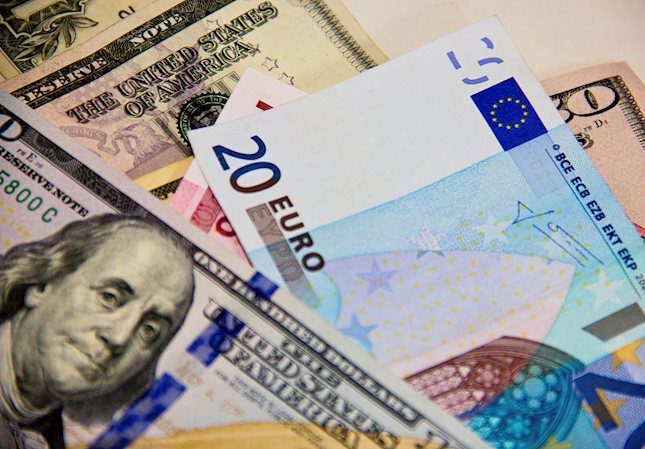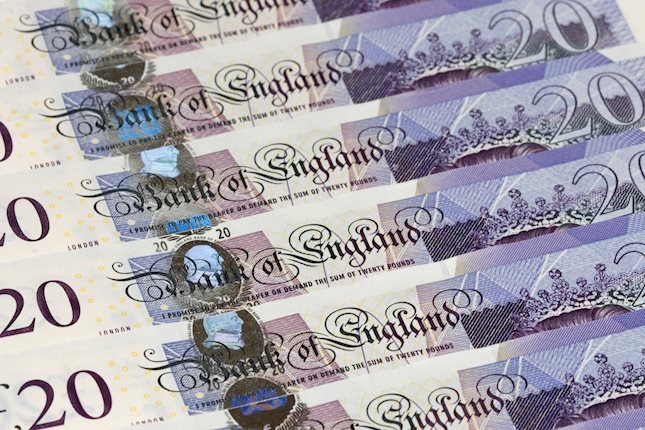- The Japanese Yen trades above 160.50 against the US Dollar.
- Traders are testing the Japanese government, which might not take action until Friday.
- The US Dollar Index pops higher after some hawkish Fed comments.
The Japanese Yen (JPY) is retreating further and faces over 5% devaluation against the US Dollar since the Japanese government's latest intervention back in May. The trigger for the US Dollar strength comes from relentless hawkish comments from US Federal Reserve (Fed) official Michelle Bowman, who said that current conditions are not appropriate to start cutting interest rates and that she even considers another rate hike before starting to cut. This feeds the US Dollar, making it strong enough to snap above 160.00 against the Yen and testing the Japanese government's line in the sand before facing interventions.
Breaking: Japanese Yen drops to multi-decade lows against US Dollar, eyes on BoJ
Meanwhile, the DXY US Dollar Index – which gauges the value of the US Dollar (USD) against a basket of six foreign currencies – is stronger with the help from the depreciation of the Japanese Yen. The other heavyweight in the basket, the Euro, is not helping either as uncertainty builds up ahead of the French snap elections on Sunday and German consumer confidence deteriorates further. This gives the DXY a boost from outside help even though the Greenback looks overvalued seeing recent economic data.
Daily digest market movers: Watch out for any reaction
- At 13:15 GMT Vice Minister of Finance for International Affairs from the Japanese Ministry of Finance Masato Kanda said that the government is looking at the FX markets with a high level of urgency and that appropriate steps will be taken when needed.
- Gareth Berry, the FX and Rates strategist from Macquarie, is expecting the USD/JPY pair to fall to 120.00. This squeeze lower is expected to happen in the next 18 months, Bloomberg reports.
- Head of sales and trading business at Mitsubishi UFJ Trust and Banking Corporation Takafumi Onodera noted that the Japanese authorities will not intervene until Friday’s US Personal Consumption Expenditures (PCE) print. A stronger-than-expected report could spur volatility and send the Yen hurtling toward 163.00 against the US Dollar, spurring officials to make a “rate check” or intervene during a period of thin liquidity. Rate checks warn traders that authorities may be preparing to step in to support the Yen.
- At 11:00 GMT, the Mortgage Bankers Association (MBA) has released the weekly Mortgage Application numbers for the week ending on June 21. Mortgage applications rose by 0.9% the previous week and came in at 0.8% for this week.
- At 14:00 GMT, New Home Sales data for May will come out. Analysts expect sales to increase slightly to 640,000 from April’s 634,000.
- The US Treasury will allot a 5-year Note in the markets at 17:00 GMT.
- The Federal Reserve’s Bank Stress Test report will come out at 20:30 GMT.
- Equities are giving up their early recovery with both European and US indices smacking down as this Dollar strength is not being favored by investors.
- The CME Fedwatch Tool is broadly backing a rate cut in September despite recent comments from Fed officials. The odds now stand at 57.9% for a 25-basis-point cut. A rate pause stands at a 35.9% chance, while a 50-basis-point rate cut has a slim 6.2% possibility.
- The Overnight indexed Swap curve for Japan shows a 56.6% chance for a rate hike on July 31, and a smaller 49.6% chance for a hike on September 20.
- The US 10-year benchmark rate trades near the weekly high at 4.27%.
- The benchmark 10-year Japan Treasury Note (JGB) trades around 1.023%, breaking above 1% for the first time since June.
USD/JPY Technical Analysis: Oil on the fire
The USD/JPY pair is flashing red warning lights as price action overheats too much. The best evidence is the Relative Strength Index (RSI), which is close to overbought conditions in the daily chart. The magic 160.00 level, where Japanese authorities intervened last time, has already been crossed. Do not expect a snap reaction immediately, as authorities will want to see if US data on Thursday and Friday could trigger some easing without sticking their neck out and intervening. On the upside, the 163.00 level could be tested on stronger US data in the coming days, while, on the downside, 151.95 is again the pivotal support to watch.
(This story was corrected on June 26, 12:19 GMT, to say that the Japanese Yen printed multi-decade low versus the Dollar, not high.)
Bank of Japan FAQs
The Bank of Japan (BoJ) is the Japanese central bank, which sets monetary policy in the country. Its mandate is to issue banknotes and carry out currency and monetary control to ensure price stability, which means an inflation target of around 2%.
The Bank of Japan has embarked in an ultra-loose monetary policy since 2013 in order to stimulate the economy and fuel inflation amid a low-inflationary environment. The bank’s policy is based on Quantitative and Qualitative Easing (QQE), or printing notes to buy assets such as government or corporate bonds to provide liquidity. In 2016, the bank doubled down on its strategy and further loosened policy by first introducing negative interest rates and then directly controlling the yield of its 10-year government bonds.
The Bank’s massive stimulus has caused the Yen to depreciate against its main currency peers. This process has exacerbated more recently due to an increasing policy divergence between the Bank of Japan and other main central banks, which have opted to increase interest rates sharply to fight decades-high levels of inflation. The BoJ’s policy of holding down rates has led to a widening differential with other currencies, dragging down the value of the Yen.
A weaker Yen and the spike in global energy prices have led to an increase in Japanese inflation, which has exceeded the BoJ’s 2% target. Still, the Bank judges that the sustainable and stable achievement of the 2% target has not yet come in sight, so any sudden change in the current policy looks unlikely.
Information on these pages contains forward-looking statements that involve risks and uncertainties. Markets and instruments profiled on this page are for informational purposes only and should not in any way come across as a recommendation to buy or sell in these assets. You should do your own thorough research before making any investment decisions. FXStreet does not in any way guarantee that this information is free from mistakes, errors, or material misstatements. It also does not guarantee that this information is of a timely nature. Investing in Open Markets involves a great deal of risk, including the loss of all or a portion of your investment, as well as emotional distress. All risks, losses and costs associated with investing, including total loss of principal, are your responsibility. The views and opinions expressed in this article are those of the authors and do not necessarily reflect the official policy or position of FXStreet nor its advertisers. The author will not be held responsible for information that is found at the end of links posted on this page.
If not otherwise explicitly mentioned in the body of the article, at the time of writing, the author has no position in any stock mentioned in this article and no business relationship with any company mentioned. The author has not received compensation for writing this article, other than from FXStreet.
FXStreet and the author do not provide personalized recommendations. The author makes no representations as to the accuracy, completeness, or suitability of this information. FXStreet and the author will not be liable for any errors, omissions or any losses, injuries or damages arising from this information and its display or use. Errors and omissions excepted.
The author and FXStreet are not registered investment advisors and nothing in this article is intended to be investment advice.
Recommended content
Editors’ Picks

EUR/USD holds steady near 1.0300 ahead of EU/ German data
EUR/USD eases to near 1.0300 in the early European session on Monday. A softer risk tone offsets a broadly subdued US Dollar, weighing down on the pair. Traders now shifts their focus to the EU Sentix data and Germany's inflation report for frresh trading impetus.

GBP/USD rises toward 1.2450 amid softer US Dollar
GBP/USD finds demand and closes in on 1.2450 in European trading on Monday. The pair benefits from the US Dollar's sluggish performance even though risk sentiment remanis tepid at the start of the US Nonfarm Payrolls week. Mid-tier US data remains on tap.

Gold price extends its steady descent to around $2,630
Gold price attracts some follow-through sellers at the start of a new week and retreats further from a nearly three-week high, around the $2,665 region touched on Friday. The prospects for slower Fed rate cuts in 2025 keep US Treasury bond yields elevated, undermining the non-yielding yellow metal.

Bitcoin, Ethereum and Ripple show signs of bullish momentum
Bitcoin’s price is approaching its key psychological level of $100,000; a firm close above would signal the continuation of the ongoing rally. Ethereum price closes above its upper consolidation level of $3,522, suggesting bullish momentum. While Ripple price trades within a symmetrical triangle on Monday.

Week ahead – US NFP to test the markets, Eurozone CPI data also in focus
King Dollar flexes its muscles ahead of Friday’s NFP. Eurozone flash CPI numbers awaited as euro bleeds. Canada’s jobs data to impact bets of a January BoC cut. Australia’s CPI and Japan’s wages also on tap.

Best Forex Brokers with Low Spreads
VERIFIED Low spreads are crucial for reducing trading costs. Explore top Forex brokers offering competitive spreads and high leverage. Compare options for EUR/USD, GBP/USD, USD/JPY, and Gold.